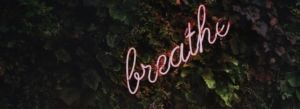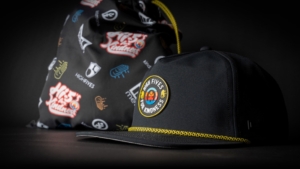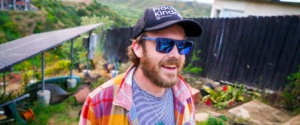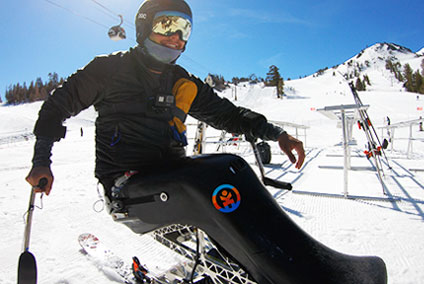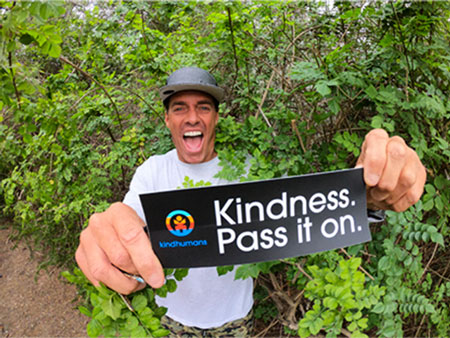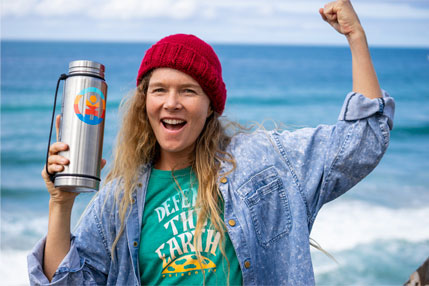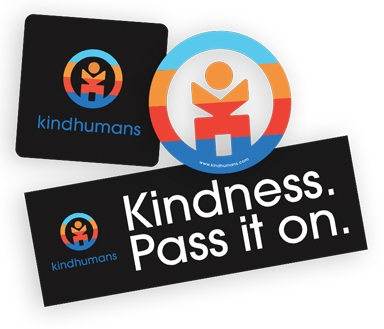
Gear Checklist + Tips for a #PRSNT Nomadic Life
Tips and TricksGear Checklist + Tips for a #PRSNT Nomadic Life
Kindhumans ambassadors, and founders of PRSNT Adventure Retreats, Kjersti Buaas and Chanelle Sladics live the nomadic life with presence + mindfulness and share their tips on being a PRSNT nomad. – KH
With a background in professional snowboarding, traveling is pretty much a part of our DNA here at PRSNT. We thrive on following our adventurous hearts, wildest dreams and passions. We like to call ourselves full-time modern nomads.
Recently, we have also become what is referred to on social media as #vanlifers. In 2019, we designed and built out our own sprinter van, #ladylunasprinter. She is powered to go anywhere—designed and built to get lost for days in comfort with 4×4 and off-grid systems. This winter was our first proper winter in the van, and it was magical. We traveled to different Ikon Pass resorts in California, including Tahoe, Mammoth and Big Bear. Waking up in the van is so special. The walls are made from beautiful bamboo that we stained with non-toxic oil. We have a shower and a composting toilet. The kitchen is 18-feet long, because we love cooking. The van is insulated with wool, and we made sure not to use harmful chemicals and materials in the process, as it’s a small space and living and breathing in toxins is no good. It’s such a fun, adventurous way to explore life, nature and an active lifestyle, always on the move. With Lady Luna we can continue living the nomadic life we love.
We look at life as an adventure and believe that ultimately, we should treat every moment like gold, for what makes any moment more important than the other? The truth is that life is short. But life is also right here, right now. And it is our responsibility to love, embrace and live life to the fullest.
To us, living life to the fullest is very connected to exploring the natural world, using our bodies actively in the process. As snowboarders and athletes, we have been blessed to live the lifestyle of our dreams, with the opportunity to ride powder snow in Japan, skydive over the green hobbit lands of New Zealand, kayak along the vast, volcanic shoreline of the NaPali coast, climb tall, snowy mountain peaks in the Arctic, rappel down steep waterfalls and explore the deep ocean floors of Hawaii.
Yoga, free diving, kayaking, mountain climbing, stand-up paddling and snowboarding—we are absolutely in love with these human-powered activities that connect us to nature and ourselves. We are firm believers that having a connection to the natural world is elemental to human health and our well-being. Nature’s playgrounds have so much to offer and should be explored by humankind, because nature is integral to a healthy mindset.
But before you head out into the wild on longer adventures, there are several things you should consider. Mindful, proper preparation is crucial to both staying safe and being able to enjoy your adventures to the fullest. How and what you pack can make or break your trip and impact nature negatively—the last thing you want.
If you are going hiking, for example, in places like Yosemite Valley, one crucial thing to think about is food storage, as bears and other wildlife roam the valley. If we mindlessly leave food and trash near our campsites, it negatively affects these animals and changes their behavior. There are bear boxes provided at most campgrounds, but let’s say you are hiking farther along, like on the John Muir Trail, and want to set up a tent in the backcountry. You will need to have your own bear box to prevent bears from breaking into your food storage or tent.
The temperatures in the backcountry during summer can change dramatically in just a few hours. If you are planning to go camping, make sure you bring enough warm clothes for colder nights. On the contrary, during the day many places tend to heat up with very high temperatures, so it’s good to have layers that you can shed throughout the day, that dry quick if you get sweaty while hiking.
Blisters are very common on longer hiking adventures so making sure you have tested your footwear before you leave from home can save you a lot of pains and aches. Most stores have loads of knowledge and can help pick the right gear for you.
We like to treat our bodies well, and eating healthy is so important if you want to have sustained energy throughout your adventures. Heavy junk food is not the best fuel for your body or mind. Key ingredients to a successful adventure are to be kind to yourself, providing your body and mind with movement, healthy food, good thoughts and love.
Your level of education about the backcountry also matters. You should know what steps to take if you encounter an injured hiker or camper. Learn how to navigate, find coordinates on maps, and use a compass so that you’re always on the right path.
There is an adventurer living inside all of us, just waiting to be set free. And yes, there are many things to consider before you go into the backcountry, but don’t let that deter you. Remember that you should start slow with short local trips that are within your comfort zone and where you will be more familiar with the climate and surroundings. It is also smart to consult with and bring friends and family on your adventures, especially if they are more experienced than you. Exploring and being adventurous is all about having fun and enjoying the journey.
In the spirit of awakening that adventurer we have made a camping list with our “must haves”—our favorite eco-friendly gear that we bring with us when we go on adventures. This list has come to life as we started taking notes on what we needed or forgot (or didn’t use) on previous trips. Use this list as a “base” and add what you need for your adventures and take note of what you used or didn’t use for specific trips, seasons etc. That way you can be more prepared for your next adventure, and eventually you will have you own individualized adventurer packing list.

ESSENTIAL PACKING LIST FOR CAMPING AND ADVENTURES
- Headlamp and batteries (or charger). We love Goal Zero solar chargers
- Water filter. For a filter that works for potable water try the GOpure Water Purifier Pod (not to be used in lakes, streams or rivers)
- Water Gators (3 liter—always an option to fill less). You should plan for about 4 liters of water per person for long (10 hour) day hikes
- Bring plenty of snacks
- Hammocks are a fun camping essential, maybe you can even sleep outside?
- Big backpack—60 liters
- Small backpack for quick adventures (Chico Bags are our favorite light daypacks)
- Sleeping bags—15 degrees for cooler areas
- Tent
- Some places—especially national parks—require permits, so make sure to do your research up front
- Map of the area you are hiking in
- Airhorn for scaring off any unwanted wildlife (like when hiking in the dark where there are bears or predators)
- Light clothes for hiking (smart to bring things that dries quick)
- Wool layers and down jacket for cold nights
- Extra socks
- Light hiking shoes
- Down booties for cold nights
- Small, lightweight towel or eco-friendly towel
- Fanny packs to store camera/phone for short day hikes
- Biodegradable bags for trash and poop
- Kindhumans cap to provide shade from the sun
- Sunglasses
- Sunscreen
- Camera
- Carabiners
- Rope or paracord for emergencies and to dry out wet clothes
- Knife or Leatherman
- Compass, or a compass that comes with a flask!
- Portable cooking system, like a Jetboil
- Reusable utensil set like Magware or Final
- Hand Sanitizer
- A small sponge
- Non-toxic, eco-friendly soap
- Small, reusable towels
- Dice or cards for entertainment
- Journal + pen
- Lighter + waterproof matches
- First aid kit. We love this Kind to Your Boo-Boo Bundle
- Food—lightweight, organic pre-made meals from camping stores work great!
- Small reusable bag with coconut oil for cooking
- Snacks for hiking
- Reusable bags for trash and waste. Basically, leave nothing behind on the trails but good vibes
We hope you enjoyed these tips, shaped by our experiences and urge to explore, adventure and live a Nomadic lifestyle. Our beautiful planet has so much to offer. We hope we inspired passion, lust and curiosity to explore the outdoors and joy and presence in your heart and soul. Please feel free to share this article and be social about it if you found it helpful. @chanellesladics + @kjerstibuaas
Kjersti Buaas and Chanelle Sladics are the founders of PRSNT Adventure Retreats. Kjersti Buaas is a four-time Olympian snowboarder + medalist and health + environment activist. Chanelle Sladics is an X Games medalist in snowboarding, activist, public speaker, health + wellness advocate and founder of Simply Straws.


